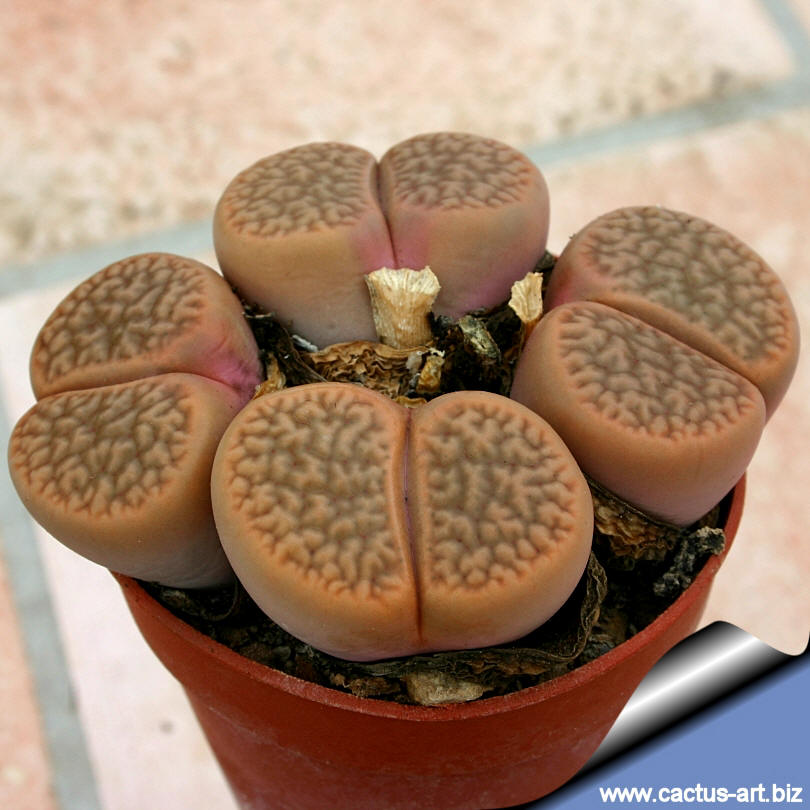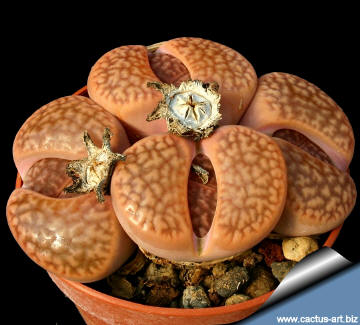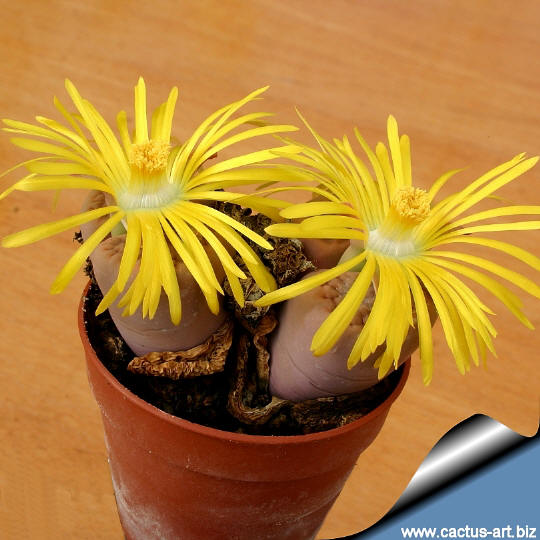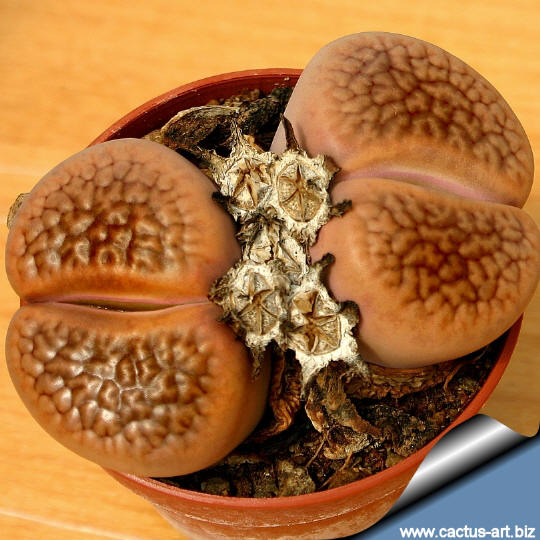|
|
|

Lithops hookeri Abrahamsdam
The plant from this locality have colourful rusty red top.
|
|
 |
Remarks: Lithops are partly
subterranean, with only the clear 'window'
in each leaf tip exposed above soil. A type of optical system exists
whereby a layer of apical tissue rich in calcium oxalate crystals acts
as a filter to intense sunlight before it reaches the thin
chlorophyllous layer below. They are also called
mimicry plants as they show a striking similarity to their
background rocks and are difficult to detect when not in flower. These
are the commonly known as pebble plants or living stones; each species
is associated with one particular type of rock formation and occurs
nowhere else. Its soil-embedded, subterranean growth form also reduces
the need for chemical defences against herbivores.
◄LEFT: Springtime, new leaves are developing
within the old leaf-pairs. |
|
Cultivation: They need an open mineral, fast draining mix and the maximum
amount of light you are able to give them. The basic cultivation routine
is: Stop watering after flowering. Start watering after the old leaves
are completely dry (usually late March or Early April). Water freely during
the growing season, soak the compost fully but allow it to dry out
between waterings. Some growers fertilize frequently, some hardly ever.
Keep them dry during the winter. Nearly all
problems occur as a result of
overwatering and poor ventilation, especially when weather
conditions are dull and cool or very humid.
Photo of conspecific taxa, varieties, forms and cultivars of
Lithops hookerii
|
|


Advertising
|
|
|
|
Family: Mesebrianthemaceae (Aizoaceae)
Scientific name: Lithops
hookeri (Berg.) Schwant. (1908)
var. hookeri
Origin: South Africa
Grows scattered in a large area in the Cape province
Habitat:
Lithops hookeri
grows on different kind of stony ground
comprising transluscent quartzite; amygdaloidal lava; amygdaloidal lava
with some sandstone; sheared micaceous quartzite. Colours grey-white,
brown, pink, grey, some white, red.
Synonyms:
- Lithops hookeri
(Berg.) Schwant. 1908
- Lithops turbiniformis
(Haw.) N.E.Br. 1920
- Mesebrianthemum turbiniforme
Haworth 1821

|
|
|
|

Note: After flowering in the
autumn and extending through
winter
season the plant doesn’t need
watering, but they will still be
growing, the new
bodies will be increasing in size extracting
water from the outer
succulent leaves, allowing them to
shrivel away. In fact the plant in this time extracts
water and
nutrient stored in the outer
succulent leaves, allowing them to
dehydrate relocating the water to the rest of the plant and to
the new leaves that form during this period until the old leaves are
reduced to nothing more than "thin papery shells". |
|